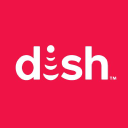Why Dish Network’s Pay TV Revenue Pressure Is Likely To Continue
With a market share of about 14.5%, Dish Network (NASDAQ:DISH) is the third largest Pay TV provider in the U.S. behind Comcast and DirectTV. For most of the 2000s, Pay-TV service providers were able to maintain their dominance in U.S. TV households due to advancements such as HD programming and DVR. However, with the advent of over-the-top (OTT) streaming services, Pay-TV providers are losing subscribers and revenues to companies such as Netflix. While the entire Pay TV domain is suffering, the impact on Dish has been significant, which is evident from the fact that the company has been unable to sustain its subscriber base despite the hefty positive contribution from Sling TV. In this note, we discuss the challenges that Dish Network will likely face in its efforts to meaningfully improve its pay-TV revenues in the coming years.
Challenges For Dish Network’s Pay-TV Business
Despite activating 1.6 million gross new Pay-TV subscribers in the first nine months of 2017, Dish’s subscriber base declined to 13.2 million on a net basis, indicating that cord-cutting measures continue to gain traction among U.S. households. The company launched its OTT streaming service, Sling TV, in 2015 to stem the losses in its subscriber base. While the company does not disclose standalone numbers for Sling TV currently, we believe that the net Sling TV subscriber adds have assisted the company in reducing its churn rate for its Pay-TV business in 2017. Nevertheless, we believe that the company will continue to lose subscribers in the fourth quarter of 2017, albeit at a slower rate. We project that the company will exit 2017 with around 13.2 million subscribers. In the long run, we expect Dish’s subscriber base to grow marginally to 13.5 million due to its OTT services.
- With Echostar Merger Approaching, What To Expect From Dish’s Q3 Results?
- Can Dish Network Stock Return To Its Pre-Inflation Shock Highs?
- Dish Stock Has Big Upside Potential To Its Pre-Inflation Peak
- How Will The Cyber Attack Impact Dish’s Q1 Results?
- Is Dish Network Stock A Buy Despite Many Headwinds?
- Will Dish Network Stock Continue To Underperform?
Furthermore, we estimate that the company’s Pay TV market share will increase from 14.6% in 2017 to around 15.3% over the next seven years, even as the total number of U.S. Pay TV subscribers decline. However, the company continues to face intense competition, as incumbents such as DirectTV (DirectTV Now) have launched OTT streaming services to offset subscriber losses. This competition in the industry, coupled with streaming services from other content providers such as Netflix, Sony, HBO and CBS, will limit Dish’s market share and subscriber growth.
Nevertheless, Dish’s management believes that Sling TV is well poised to take advantage of changing video consumption behavior and changes in preference towards streaming. However, a streaming service such as Sling is priced at a much lower price point (Sling TV’s skinny bundles range from $20 to $40) than a traditional cable bundle, which cost around $60-65 per month on average. As a result, we believe that the growth in lower-priced Sling TV subscribers will put pressure on the company’s average fee per subscriber. This decline in fees, coupled with anemic subscriber growth, will negatively impact Pay-TV revenue growth in the future.
Our price estimate of $50 for Dish Network is slightly above the current market price.
For precise figures, please refer to our complete analysis for Dish Network
Interactive Institutional Research (Powered by Trefis):
Global Large Cap | U.S. Mid & Small Cap | European Large & Mid Cap |More Trefis Research
